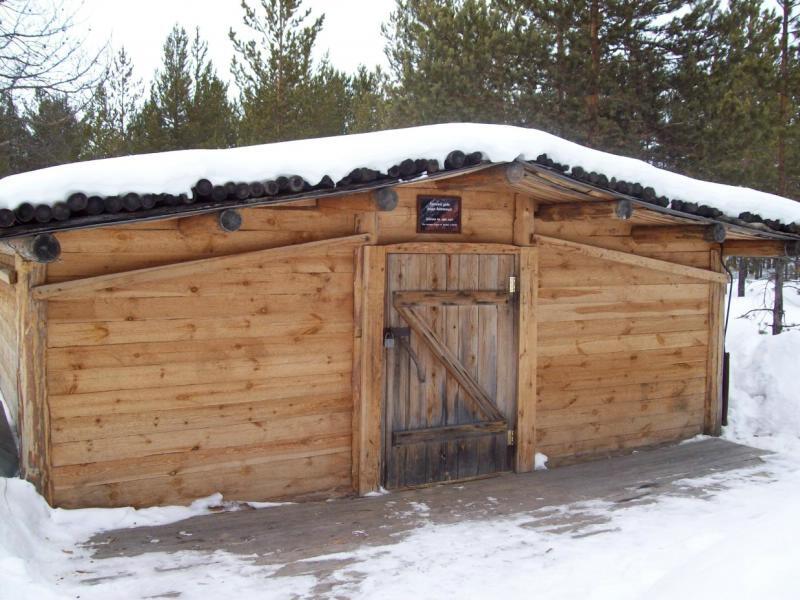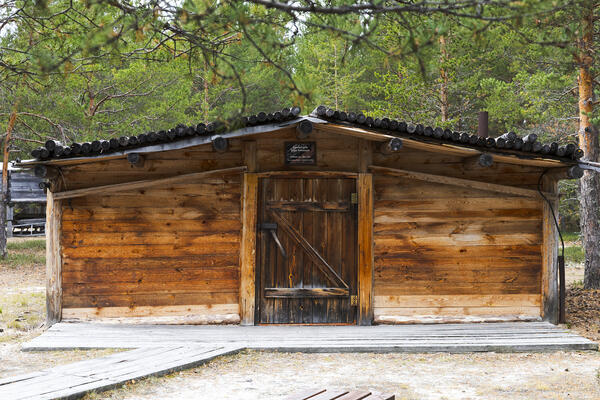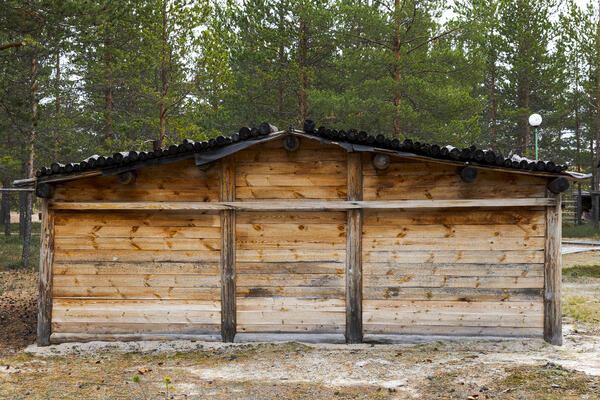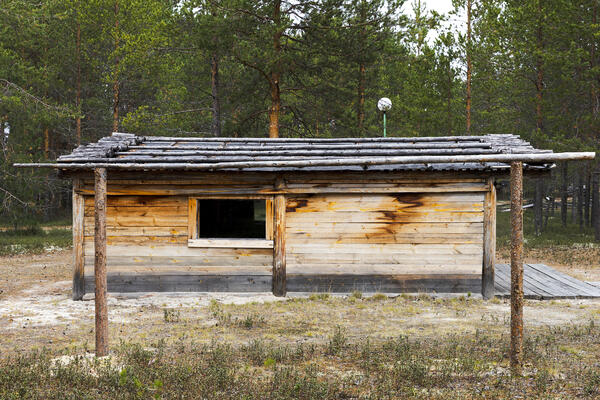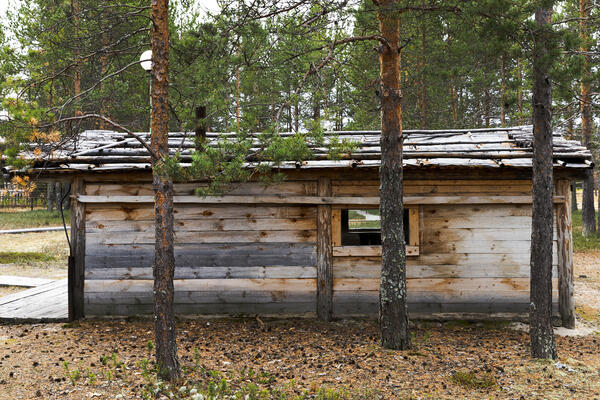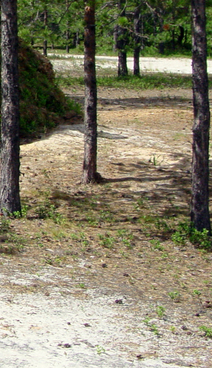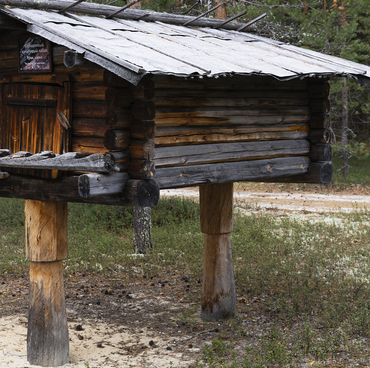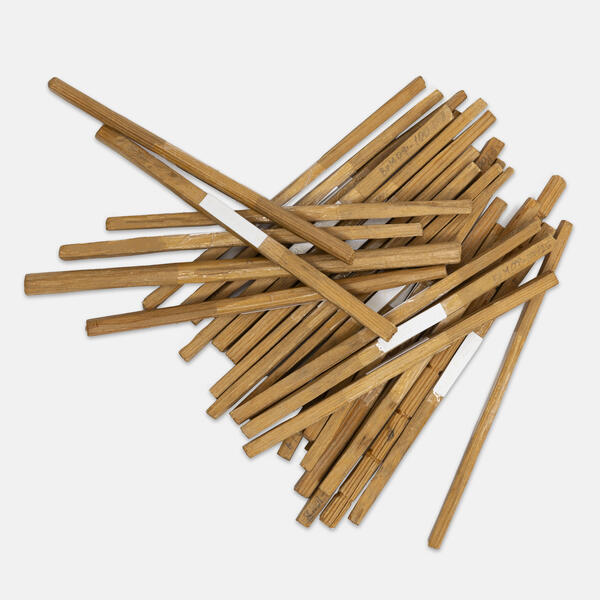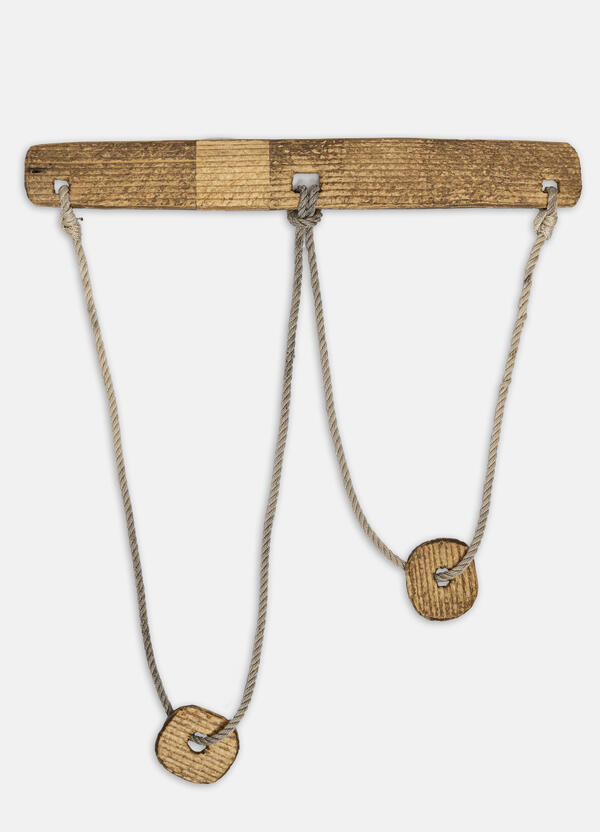The Agan Khanty belong to the eastern group of the Khanty, a Finno-Ugric indigenous people living in northwestern Siberia. Their culture and ethnic identity have developed in close connection with the natural environment. The design of their settlements is influenced by the type of trade.
Non-nomadic fishermen build permanent dwellings in the forest, while migratory groups have both winter houses and temporary summer houses constructed near bodies of water. When building a hut, the Khanty mostly use pine wood. They begin preparation in spring or early summer when the bark is easy to remove. After being carefully debarked, the logs produce resin which serves as a natural barrier against moisture.
In the Khanty language, “len part kot” literally means “a summer log house”. It was built by members of the Aypin family on the territory of the Park Museum of the Varyogan Village. It is an exact copy of old Khanty huts. The Aypins are one of five families inhabiting the settlement. Each family has its own spirit animal: the Kazamkins are the bear clan, the Sardakovs — the moose clan, the Aypins and Iusi — the beaver clans, and the Ayvaseda — the pike clan.
The summer house of the Aypins is a rectangular frame building constructed on the ground according to the old dapping technology. Large, 5-cm-thick horizontal boards are inserted into the daps of vertical support posts. Nowadays, this method is no longer used in the construction of wooden houses.
The frame is made of eight vertical posts: four in the corners, two in the middle of the back wall, and one in the middle of each side wall. The side walls consist of 11 rows of logs, and the front and back walls — of 14 rows. The summer house has no foundation or ceiling and has been assembled without a single nail.
The gabled roof is made of seven wooden poles, covered with split laths, and on top with birch bark, and hewn logs. The entrance faces southeast and is closed by a low board door. There are small windows on the left and right sides of the house.
The floor is sunk 35 centimeters into the ground,
covered with boards, and painted brown. Instead of an old clay stove, it
features an iron cast “burzhuika” stove. Along the wall, there are wooden beds.
In summer, they were covered with curtains to protect the sleeping person from
gnats and mosquitoes.

